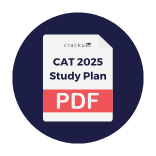SSC CGL Tier-2 20-February-2018 Maths
For the following questions answer them individually
SSC CGL Tier-2 20-February-2018 Maths - Question 31
In the given figure, $$P$$ is the centre of the circle. If $$QS = PR$$, then what is the ratio of $$\angle RSP$$ to the $$\angle TPR$$?

SSC CGL Tier-2 20-February-2018 Maths - Question 32
The distance between the centres of two circles is 61 cm and their radii are 35 cm and 24 cm. What is the length (in cm) of the direct common tangent to the circles?
SSC CGL Tier-2 20-February-2018 Maths - Question 33
In the given figure. $$PQRS$$ is a quadrilateral. If $$QR = 18 cm$$ and $$PS = 9 cm$$. then what is the area (in $$cm^2$$) of quadrilateral $$PQRS$$?

SSC CGL Tier-2 20-February-2018 Maths - Question 34
$$PQR$$ is a triangle, whose area is 180 $$cm^2$$. $$S$$ is a point on side $$QR$$, such that $$PS$$ is the angle bisector of $$\angle QPR$$. If $$PQ : PR = 2 : 3$$, then what is the area (in $$cm^2$$) triangle $$PSR$$?
SSC CGL Tier-2 20-February-2018 Maths - Question 35
In the given figure. ABCD is a square. EFGH is a square formed by joining mid points of sides of ABCD. LMNO is a square formed by joining mid points of sides of EFGH. A circle is inscribed inside EFGH. If area of circle is 38.5 $$cm^2$$. then what is the area (in $$cm^2$$) of square ABCD?

SSC CGL Tier-2 20-February-2018 Maths - Question 36
ABCDEF is a regular hexagon of side 12 cm. What is the area (in $$cm^2$$) of the triangle ECD?
SSC CGL Tier-2 20-February-2018 Maths - Question 37
PQRS is a square whose side is 16 cm. What is the value of the side (in cm) of the largest regular octagon that can be cut from the given square?
SSC CGL Tier-2 20-February-2018 Maths - Question 38
In the given figure, PQRS is a rectangle and a semicircle with SR as diameter is drawn. A circle is drawn as shown in the figure. If QR = 7 cm, then what is the radius (in cm) of the small circle?

SSC CGL Tier-2 20-February-2018 Maths - Question 39
In the given figure, PQR is a quadrant whose radius is 7 cm. A circle is inscribed in the quadrant as shown in the figure. What is the area (in $$cm^2$$) of the circle?
.png)
SSC CGL Tier-2 20-February-2018 Maths - Question 40
A prism has a regular hexagonal base with side 6 cm. If the total surface area of prism is $$216\surd3$$ $$cm^2$$, then what is the height (in cm) of prism?

